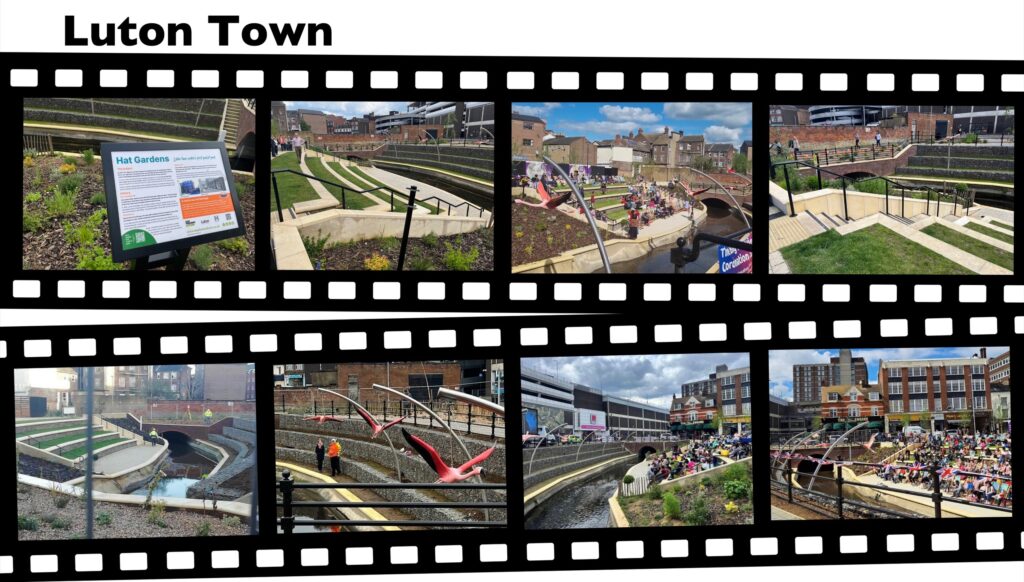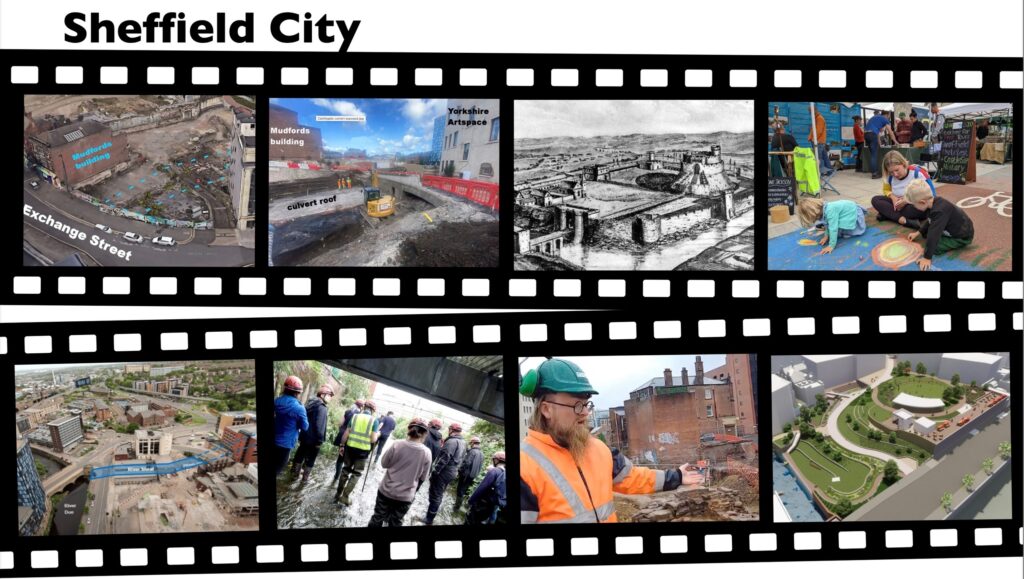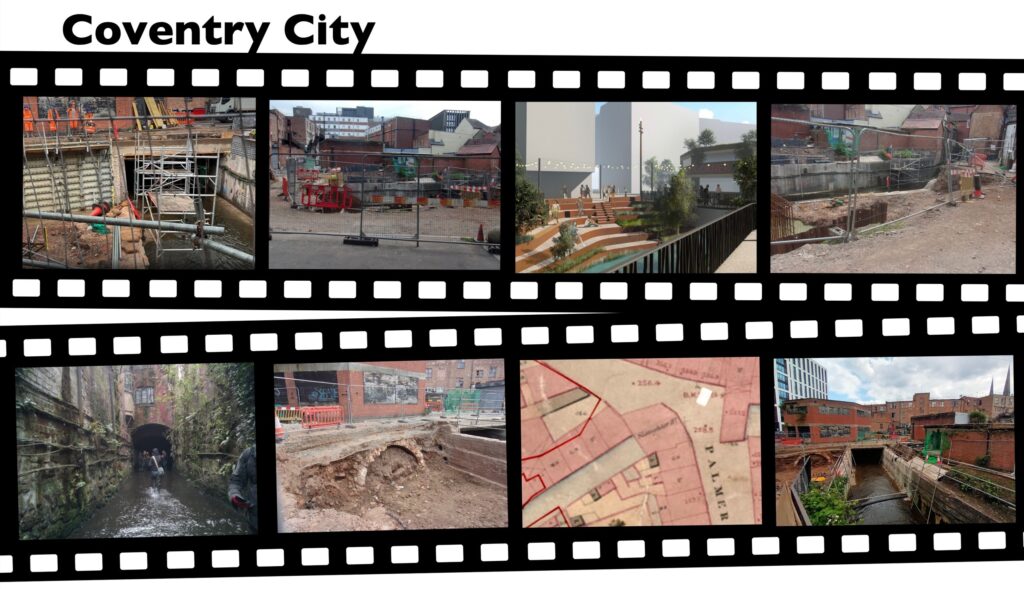As the Palmer Lane project slowly comes to life, CovSoc founder member, Paul Maddocks, tells us about similar schemes in other towns and cities around the country. Paul writes…..
I see a few cities are starting to look at opening up their rivers. Luton Town has already finished theirs.
It is called’ Hat Gardens’. The river Lea used to run through an underground culvert built in Victorian times to create an industrial area with hat – related businesses. Luton was once the beating heart of the hat making industry in England. In the 1800s, there were over 500 hat manufacturers. In the 1930s’ they made a jaw-dropping 70 million hats a year.
Today, the hat making crew in Luton has slimmed down to a dozen or so.
In 2021, the ‘Open Lea’ project began to reveal the hidden River Lea, removing traces of a factory floor and walls and the leftovers of a lift shaft and staircase. The pocket park was officially opened in May 2023, all in the name of injecting some greenery and breath of fresh air into the town centre.

The Luton Town Council have been able to design, deliver and open one of the first new pieces of public realm in Luton town centre in decades. It has plants, trees and an amphitheatre that runs down to the river, which is used for “micro events”. The main feature is a series of pink flamingo full size models that look like they are flying over and down the course of the river.
Another city which is uncovering its water courses is Sheffield. The Castlegate Site, is a very large scheme in Sheffield City Centre.
The project represents a landmark in reclaiming the river ‘Sheaf’, after which Sheffield is named. The scheme focuses on a section of the River Sheaf, where it meets the River Don in the centre of Sheffield. The project is to reopen the river to public view, representing one of the “major ambitions” behind the establishment of the ‘Sheaf and Porter Trust’.
The river was covered up in 1917 as part of work to create the Castle Market. Archaeologists began excavating the site after Castle Market was demolished eight years ago. Uncovering the river is part of a wider £15m project to create a new public park on the Castlegate site which is due to be completed by 2026.
Work on the river begin in August 2024. At the time the river was covered over it was badly polluted, with waste from nearby slaughterhouses entering the water. The council said at the time the Sheaf was effectively an open sewer. This project will greatly enhance the park and kickstart the restoration of the river as a habitat.
A castle is first thought to have been built in Sheffield at the confluence of the Sheaf and Don rivers between 1100 and 1150 following the Norman invasion. Historians believe the original timber and earth structure had been replaced with a stone building, commissioned by King Henry III, by the end of the 12th century.
The work to allow ‘re-naturalisation’ of the river including a new rock ramp fish pass over the 1.5 m high Castle Orchard Weir, a vital first step to restoring the biodiversity of the Lower Sheaf. Access for river stewardship, emergency services and for enjoyment of the river will also be facilitated although details are not yet finalised.

Demolition was carefully controlled to avoid debris blocking the river channel or causing undue disturbance to the small bat colony which occupies the large adjoining culvert chamber known as ‘the Megatron’. Concrete slabs were sawn into manageable blocks and craned out followed by supporting beams over several months in two phases.
The Castle site reclamation and park construction is funded by a £15m grant from the Department of Housing Communities and Local Government plus contributions from South Yorkshire Mayoral Authority and the Environment Agency. Work on the whole park is programmed to be completed by Spring 2026.
You can follow progress with the scheme here.
There have been a few delays in our own Palmer Lane scheme, following the discovery of an unknown bridge. However, it is still hoped that the scheme will be completed before the end of the year, only forty years after my first draft plan for the area.

